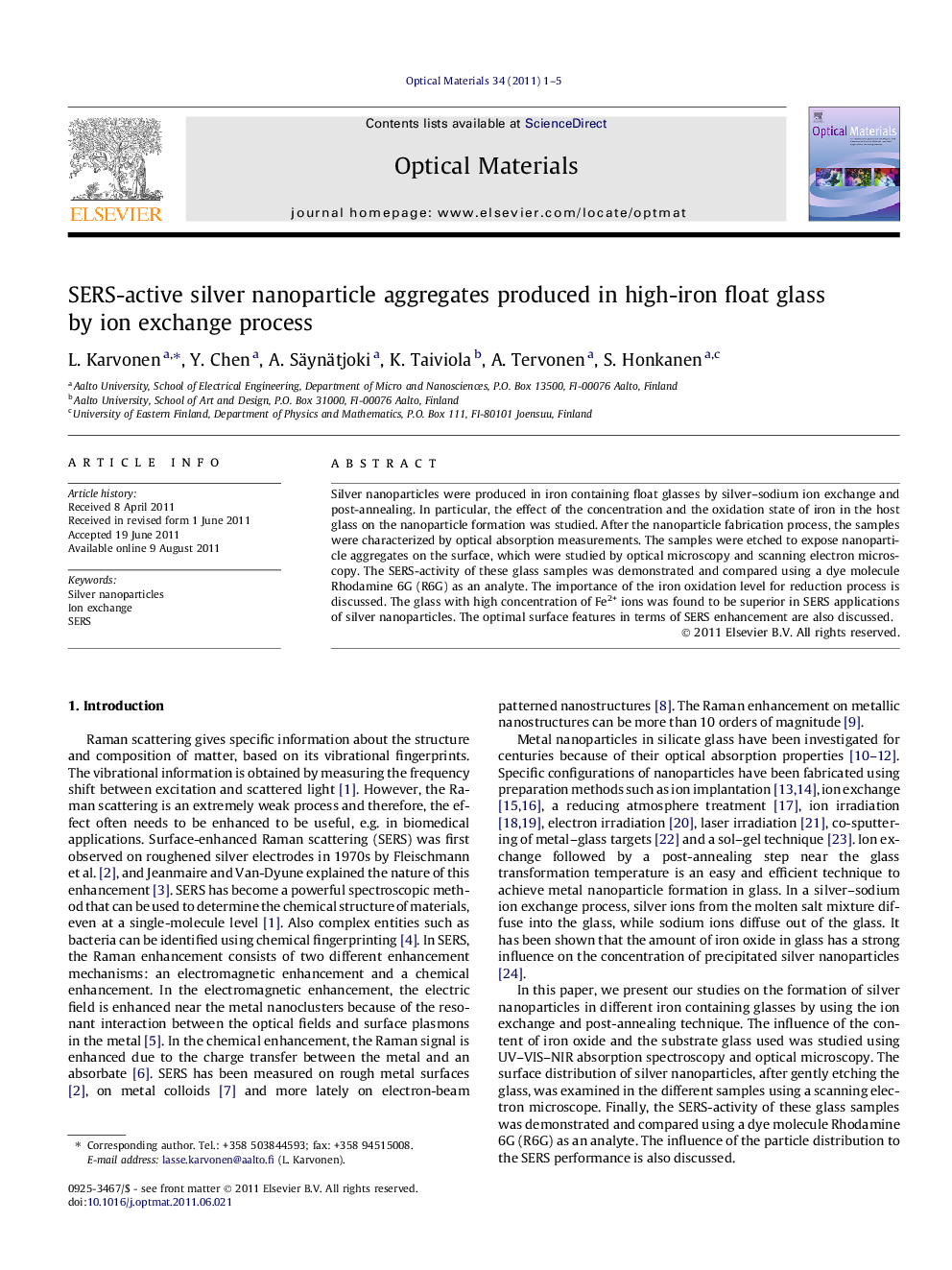| کد مقاله | کد نشریه | سال انتشار | مقاله انگلیسی | نسخه تمام متن |
|---|---|---|---|---|
| 1495941 | 992951 | 2011 | 5 صفحه PDF | دانلود رایگان |

Silver nanoparticles were produced in iron containing float glasses by silver–sodium ion exchange and post-annealing. In particular, the effect of the concentration and the oxidation state of iron in the host glass on the nanoparticle formation was studied. After the nanoparticle fabrication process, the samples were characterized by optical absorption measurements. The samples were etched to expose nanoparticle aggregates on the surface, which were studied by optical microscopy and scanning electron microscopy. The SERS-activity of these glass samples was demonstrated and compared using a dye molecule Rhodamine 6G (R6G) as an analyte. The importance of the iron oxidation level for reduction process is discussed. The glass with high concentration of Fe2+ ions was found to be superior in SERS applications of silver nanoparticles. The optimal surface features in terms of SERS enhancement are also discussed.
► Ag nanoparticles were fabricated by ion exchange in iron containing glasses.
► Effect of iron concentration and oxidation state on nanoparticle formation was studied.
► In pristine glass, iron in 2+ oxidation state was shown to be important.
► It was shown that iron oxidation from Fe2+ to Fe3+ is needed to reduce Ag+ to Ag0.
► High-iron float glasses were shown to be superior for SERS substrate fabrication with this process.
Journal: Optical Materials - Volume 34, Issue 1, November 2011, Pages 1–5